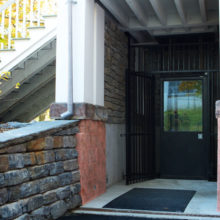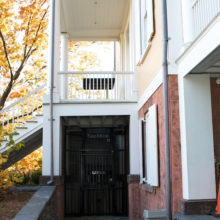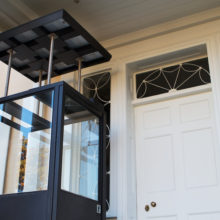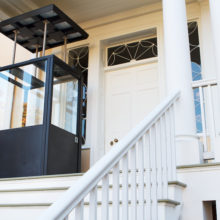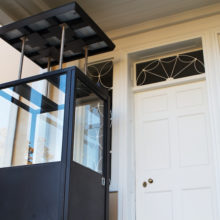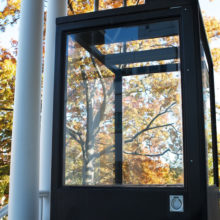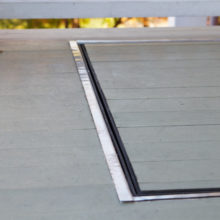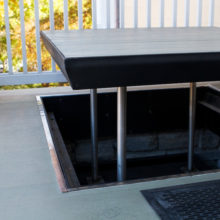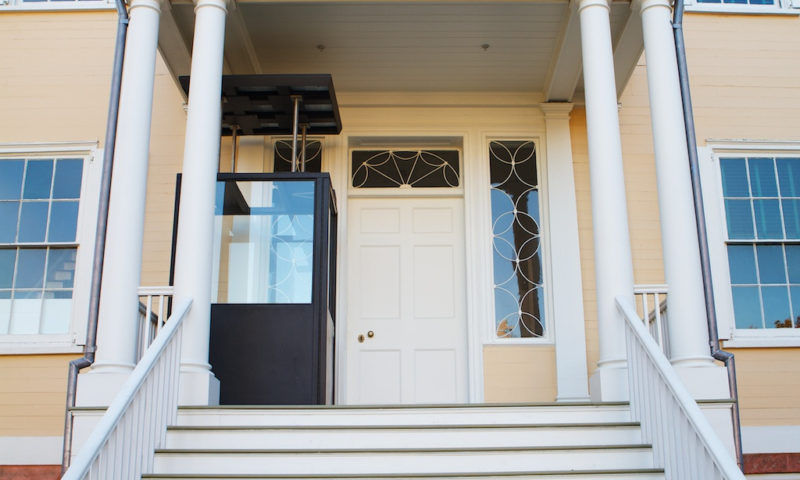
ACCESS TO HISTORY
The Hamilton Grange National Memorial is a country home built by Alexander Hamilton in 1802 on a 32-acre site in upper Manhattan. In 2008, the Hamilton Grange was moved to its new location in Saint Nicholas Park 414 West 141st Street, near Convent Avenue.
ACCESSIBILITY CHALLENGES
The accessibility challenge for this project was to make the main floor of the home accessible without being able to see the lift when not in use, in order to preserve this historical landmark. Because the home is on a new foundation with a basement that houses the utilities and some offices there was room below grade for the lift mechanism and room under the porch to retract the lift below the porch level when not in use. The square footage of the porch was small so the space to work with was extremely limited. The lift would have to rise up through the porch between the railing on the side and the front door and there was just barely enough room to squeeze in the minimum length platform (48”).
UNIQUE DESIGN SOLUTIONS
This challenge required several ‘one of a kind’ design solutions. First of all, we had to design a guide system that would support the car but not project past the upper landing floor.
This was accomplished by hanging styles below the car with double roller assemblies to ride on 8-# T‑rails on either side of the runway supported from the underside of the upper floor to the basement level. This means substantial loads are cantilevered above the guide system when the car is at the upper landing. The custom car, sling, and styles were built by John Johnson of Paxton Metalcraft.
The next challenge was to pick up the porch floor with the roof of the car when taking a passenger to the main level of the home and then drop it back into place when the car was sent below. We designed a telescopic tube system for the top of the car and an outer and inner frame to be installed in the porch floor. The wood planking was installed in the inner frame and the frames were beveled to allow the movable piece to slide smoothly back into the porch floor even if the car was not aligned perfectly due to off center loading. Because the porch floor is sloped, the telescopic system allows the car top to remain engaged with the movable deck assembly at all times, and to pick it up smoothly even though it is not level with the car top.
The drive system by Cemcolift, Inc. included a telescopic cylinder to achieve enough travel without having to drill into the basement floor. Due to water table issues at the site we didn’t want to put the butt of the piston into the ground. We added a heater in the tank as the machine area is exposed to exterior temperatures. To protect the passenger from shear hazards, the enclosure had to be full height with a door. Quarter-inch laminated glass was used to allow the user to see where they are going and not to feel claustrophobic when riding the lift. The door closer had to be installed on the inside of the car door because the lift passes through the floor with only one inch of running clearance.
To protect the pit when the lift is in the upper landing a wrought iron gate system was specified and we installed a GAL interlock to make sure that door is secured before the lift leaves the lower landing. Obviously, this is not a typical vertical platform lift. This lift comes under the jurisdiction of the federal government and they approved this unique design solution.
The lift requires the operator to call the lift up or send it back down only from the top landing where he or she can verify that no one is near the porch floor when the lift is in operation. Trained National Park Service rangers operate the lift with a constant pressure control pendant that is located at the upper landing inside the front door to preserve the original aesthetics of the front porch.
Location
Credits
-
General Contractor
-
Architect
-
Drive System
-
Custom Platform Fabrication
Our Design team can do this and more!
We can help you design the best possible accessibility solution for the end user: an installation that is code compliant, quiet, easy to use, reliable, provides a solid ride and looks good too!
